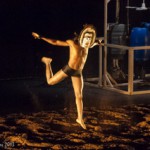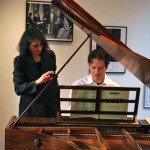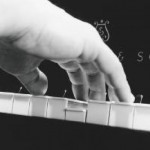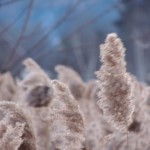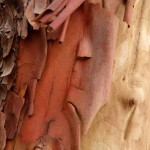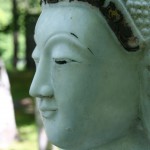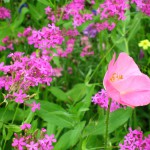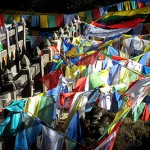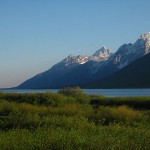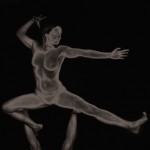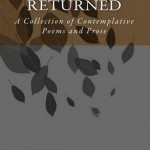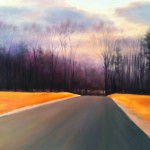Monday
Contemplative Art and Liberation—How it Works Part II
by John McQuade
The great Dharma Master Chögyam Trungpa Rinpoche presented the Buddhadharma and was the progenitor of the Shambhala teachings.
He also was a dharma or contemplative artist in disciplines such as Ikebana, calligraphy, poetry, theatre, photography, “elocution” and so forth. On various occasions he taught the principles and ways of Dharma Art. Some of these teachings are gathered in the book, True Perception.
One of the main points—perhaps the main point—of both the Buddhadharma and Shambhala Dharma ways is liberation: the shift from suffering to ease, self-obsession to compassion, discord to harmony, confusion to Wisdom, setting sun to Great Eastern Sun and so forth.
One might wonder why this great master would bother teaching Dharma Art. Is it an extra or something decisive and helpful as a liberation way? My experience is that these Dharma arts are not only intrinsically liberation ways, but they can act as a catalyst for the Buddhadharma and Shambhala liberation ways. Those ways become more effective, expressive and joyful.
Here is an excerpt of text from Chögyam Trungpa’s Shambhala: Sacred Path of the Warrior from chapter V: Synchronizing Mind and Body. This teaching is presented in three interrelated phases: teachings on synchronization, teachings on direct or true perception and teachings on fearlessness, human dignity and Great Easter Sun vision. This contemplation will focus on the second phase: direct perception.
First there is a little presentation on synchronization. Here the reference is to the synchronization of mind, body and world in contrast to what we often experience as a scattered, awkward and somewhat dysfunctional way with ourselves and the world.
One of the main points is that this capacity for synchronization is not an external imposition but rather a reconnection with our birthright human synchronization: “Synchronizing mind and body is not a concept or a random technique someone thought up for self-improvement. Rather, it is a basic principle of how to be a human being and how to use your sense perceptions, your mind and body together.”
So one of the decisive issues is how to “use your sense perceptions” as a way of synchronization. This is the second phase of the teachings.
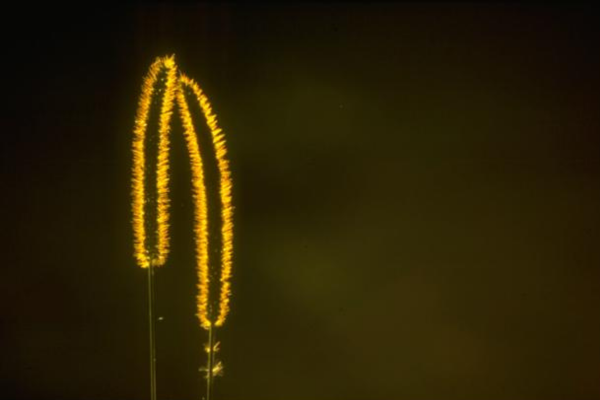
“Synchronizing mind and body is also connected with how we synchronize or connect with this world altogether. This has two stages which we call Looking and Seeing…it is somewhat easier to explain the process…in terms of visual perception.”
Then: “Looking is your first projection and if you have doubt…you feel shaky or anxious because you do not trust your vision…but the point is to look properly. See the colors: white, black, blue, yellow, red, green, purple. Look. You cannot not look. There is no other world. This is your world: it is your feast. You inherited these eyeballs; you inherited this world of color. Look at the greatness of the whole thing. Look! Don’t hesitate—Look! Open your eyes. Don’t blink, and look, look—look further.”
So this is how you do it. But how do you do it? This teaching is more of an experience description, a “pointing out” and an invocation. With all due respect it does not provide a practice/experience way.
Miksang contemplative photography provides a practice/experience way (there could be other practice ways as well).
Miksang is a Tibetan word that translates as “Good Eye.” In Shambhala terms it is the “eye or visual” way of Basic Goodness.
Miksang is a Tibetan word that translates as “Good Eye.” In Shambhala terms it is the “eye or visual” way of Basic Goodness.
Miksang asked the question: What is the visual? One could respond that the visual is what we see: what the visual sense registers/presents. What we see is everything that we see. Everything is a big and endless exploration. This is not workable as pedagogy. So we asked does the visual have features, components, elements and so forth. It turns out it does. Everything we see involves color, light, surface (our vision stops at a surface), space and we always see something in particular.

So the first phase—the Looking phase—of the Nalanda Miksang pedagogy and perception/expression training is to work through each of these visual elements. So the first assignment is to explore color as color. Then we explore light and the others.
Now we are embodying, expressing and manifesting Chögyam Trungpa’s teachings. We actually engage Looking as a real register experience. This is a liberation practice and experience. You are there with your direct visual experience. This is a first synchronization contact.
Then there is Seeing.“ You might see something which is the second stage—the more you look the more inquisitive you are, the more you are bound to see—and appreciate the world around you. It is a fantastic new discovery of the world. You would like to explore the entire universe.”
So, after establishing the first visual direct perception contact, the stage of Seeing involves the “inquisitive” “appreciation” and “exploration.” This is where Insight and Liberation ensue.
In Nalanda Miksang there are many contemplative exploration and insight ways. This is the main orientation of Nalanda Miksang. In general, they are presented through another Chögyam Trungpa teaching: Fields of Perception.
Here I am presenting some more basic and fundamental Nalanda Miksang Insight teachings. These are more rooted in the Looking phase of direct perception. The first assignment is “color as color.” Not a colorful thing like a balloon, a flower, or a fire engine. Our slogan is, “fire engine red not a red fire engine.”
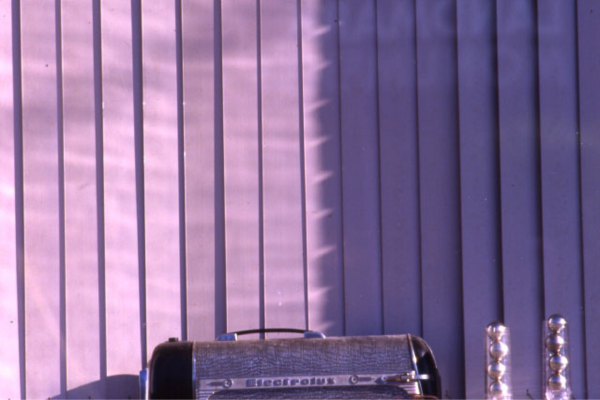
This has profound experience, implication and insight registrations. One of the features of this engagement is to discern the difference between the orientation to the “thing world” and the actual experienced appearance/phenomenal world. We actually first see a “fire engine” in terms of its colors, shapes, volumes and so forth. Notions like tires are conceptual additions. For example we cannot see the other side of the fire engine even though we “know it is there.”
This is the thing orientation. This is not exactly mistaken—it is part of our conceptual/pragmatic way of operating in our world. But it is not direct perception. Direct perception is the appearance/phenomenal manifestation. This is what we experience.
More so there is a co-presence of what we experience and the phenomenal manifestation. This is our direct perception contact. As Chögyam Trungpa says:
“There is no other world. This is your world; it is your feast.”
So the features of the appearance phenomenal world are the manifest ways of your experience. The way of appearances is fresh, fluid and free flowing. This means your experience is fresh, fluid and free flowing. This is a first step of contemplative liberation, it is never the “same old, same old.”
This Seeing/insight can run deeper and much deeper. Chögyam Trungpa notes the aspect of “appreciation.” Appreciation means to discern true value. To give a material example: if one wanted to know the value of a piece of jewelry one could go to an appraiser.
Here we are involved with the Wish Fulfilling Jewel: your life. These contemplative art practices are “appreciation ways.” Your life becomes more meaningful in the way that it is always already meaningful. This is everyday liberation.
Then there is the deep liberation insight into the way of reality manifestation. In terms of the Buddha Dharma one would contemplate how the contemplative break from the “thing orientation” to the phenomenal manifestation resonates with a basic teaching such as the Heart Sutra Emptiness/Form.
Here we will stay with this Chögyam Trungpa text. In the Looking section of the text he presents some Insight teachings:
“You inherited this; you inherited these eyeballs: you inherited this world of color.”
Here there is a pointing to the link of the primordial with the phenomenal. We are born with the capacity of vision that opens the visual world. It is a birthright miracle. It does not depend on any conditioned circumstance—other than being born as a human. It does not depend on your gender, your age, your ethnicity, whether you are rich or poor and so forth.
So there is a deep connection between this primordial miracle birthright and each every day, every moment perception way of being in the world. This realized connection is deep liberation.
We have to be kind and reasonable here. This is not a judgment. Our lives are demanding and the “thing world” is a big part of our ongoing orientation. However, it is not our whole world or even our basic experience world. So it is a matter of shifting our allegiance more and more as much as we can and mixing this into the appreciation of our everyday life. This is contemplative liberation. And a special feature of contemplative liberation is that it can be easily integrated with our everyday lives. Indeed, our everyday lives become the way of contemplative liberation.
In the third phase of this text Chögyam Trungpa links this direct perception engagement to the way of everyday warriorship:
“You can see on the spot with wakefulness. Your eyes begin to open…you can see the world is colorful, fresh and free…fantastic…in that way, synchronization of mind and body is also connected with fearlessness…here fearlessness means being able to respond to accurately to the phenomenal world…you begin to realize that you have a perfect right to be in the universe…you have looked and you have seen…this discovery is the first glimpse of what is called the Great Eastern Sun…the dawning or awakening of human dignity—the rising of human warriorship.”
Entries filed under Arts and Poetry
M’Bongui
M’bongui , a dance performance with music composed by Herbert Elsky and choreography by Sophie Fougère-Darcy, took place on February 15th at the 300 seat Mégisserie theater in St Junien (Limousin, France). M’Bongui M’bongui is a traditional Congolese dance ceremony that was practiced before and after a hunt. ... continuePosted March 3, 2013 by luz_rodriguez
Maria’s Shadow – HIGHLIGHT
A Story for the Child in All of Us by Mercedes Lawrence Maria was a happy shadow. She did all the things that little girls do. She loved to ride her bicycle, swim in the lake and play Frisbee with her dog. She had lots of shadow friends and she was ... continuePosted March 2, 2013 by
Shambhala Music-Making: Second Movement – HIGHLIGHT
A Story in 2 Movements by Madeline Bruser David’s Story Sometimes a musician is ready for a major breakthrough. David came to my weeklong summer program at Karme Choling hoping to rediscover the joy he used to feel in playing the viola. Twenty years ... continuePosted February 28, 2013 by
Shambhala Music-Making: Joining Two Lineages – HIGHLIGHT
COLUMN: In Everyday Life In which we visit with Shambhala practitioners from all walks of life to hear stories about their life, livelihood and how their meditation practice permeates their everyday experience. In this story, presented in two movements, as it were, we find out about the path ... continuePosted February 24, 2013 by
Baucis and Philemon
A Greek myth from Ovid translated by Rolph Humphries read by Celsiana Warwick at Paul Warwick’s Sukhavati February 5, 2013 An oak tree stands Beside a linden, in the Phrygian hills. There’s a low wall around them. I have seen The place myself; a prince once sent me there To a land ruled by ... continuePosted February 17, 2013 by
Saving the Planet with Rhyme and A Little Reason
Saving this Planet With Rhyme and a Little Reason As I contemplate this worlds ’sad and sorry state; Abominations of global warming, and massive pollution, Problems to which luck and serendipity are mans’ only solution I realize ... continuePosted January 6, 2013 by
The Buddha, Humming – HIGHLIGHT
Short story by Lorna Drew When I walked into the room, the Buddha was humming. I knew because the rice kernels in the bowls were tinkling, and because the Buddha had done this before. He’d been humming for a while now, but I’d never confronted him. This ... continuePosted December 17, 2012 by
A Precious Gift – HIGHLIGHT
As it nears the beginning of winter in the northern hemisphere, the Shambhala Times wanted to warm our readers up with a summertime story about dathun. Dathun is a month of meditation that provides a deep experience for the practitioner, on and off the cushion, whether ... continuePosted December 12, 2012 by
Burning Lake
burning lake Ourside altar and offerings at Burning Lake, Bumthang province, Bhutan. November 2012 each flag offers a prayer for all sentient beings, and behind that the hopes of the hangers for a better life, for better luck next time. here, they hang from every high place, dancing in the wind like fruit on the ... continuePosted December 9, 2012 by
Rites of Passage: Longing
Grand Tetons by David BrownLonging poem written by the group that went through the first Rites of Passage for the stages of life, held at Karme Choling, autumn 2012 Broken hearted kiss Embracing the planet It’s good to grow old Soft green blade of grass Drops of dew Tomorrow there will be frost Grieving ... continuePosted November 26, 2012 by
Sky Dancer – HIGHLIGHT
Introducing a new series of photographs called Sky Dancer photos by Dana Marshall, Bussum, Netherlands The power of the female body is that it is the link between heaven and earth. Sky Dancer touches on embodied feminine energy. These images are a proclamation of strength and playfulness. They are ... continuePosted November 18, 2012 by
The Sakyongs Have Returned – HIGHLIGHT
Introducing a new a collection of contemplative poetry and prose: The Sakyongs Have Returned by David Whitehorn Spontaneous poems and toasts are a delightful part of Shambhala culture. Perhaps like other long-time Shambhala practitioners, throughout the years I have been writing down spontaneous poetry and prose whenever the ... continuePosted October 28, 2012 by
Snapshots of Basic Goodness: August – HIGHLIGHT
This regular posting features snapshots of basic goodness as seen out in the world, on the street, in the countryside, in another country, at work, home, garden or grocery store. (Click on each image to view larger.) Desk, by David Wilde continuePosted August 12, 2012 by
How Good the World! – HIGHLIGHT
The Road – in progresspaintings offered by Christine Labich, of the Pioneer Valley Shambhala Center Christine Labich has been gazing at, studying, and tending to the natural world for her lifetime, beginning with her childhood on a pioneering organic farm in New Hampshire. She studied ecology and ... continuePosted August 11, 2012 by
Integrating Head & Heart – HIGHLIGHT
by Brandon Rennels, from The Under 35 Project A year ago I was sitting at a cafe in Ann Arbor, enjoying breakfast with a beloved professor from university. When I was in school he taught a course entitled Psychology of Consciousness, which was one my first introductions ... continuePosted August 8, 2012 by
![]() RSS feed for the Arts and Poetry category
RSS feed for the Arts and Poetry category
View all posts from authors in Arts and Poetry: Jillian_Johnson


